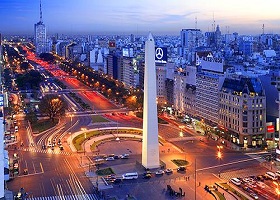41-Day Grand South America & Antarctica Voyage
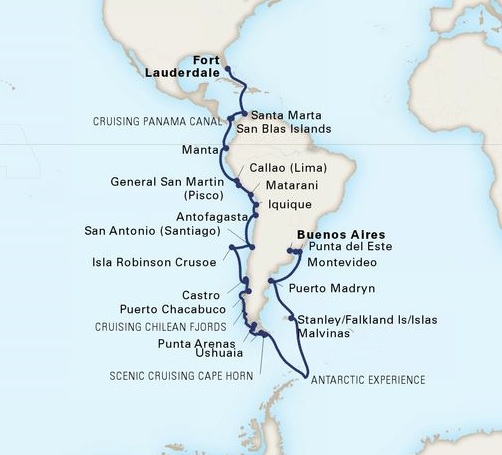
Starting from
$6,099*
Fort Lauderdale, Florida, US to Buenos Aires, Argentina
Ship: ms Volendam
Departure Date :
Optional tours are available from most ports for an additional charge.
Itinerary
Day Fort Lauderdale, Florida, USDeparts 06:00 PM
"Shimmering blue waters, swaying palm trees and soft ocean breezes greet you in Ft. Lauderdale, Florida, where you'll find yourself somewhere between laid-back island time and the fast pace of a thriving city. In this sun-filled, year-round beach town, pristine beaches are the main attraction, shorts and flip-flops are the daily uniform, and yachts are often the preferred form of transportation. It's a place where you can do as much, or as little, as you desire. Because of its many canals and waterways, Ft. Lauderdale is sometimes called the Venice of America. It's home to the annual Fort Lauderdale International Boat Show, one of the largest in-water boat shows in the world. Visitors can easily get a taste of the area's nautical lifestyle by cruising the Intracoastal Waterway on an old-fashioned paddle wheeler. Other options include hopping aboard one of the popular water taxis or Venetian gondolas that glide down the historic New River, which flows right through town. "
"Shimmering blue waters, swaying palm trees and soft ocean breezes greet you in Ft. Lauderdale, Florida, where you'll find yourself somewhere between laid-back island time and the fast pace of a thriving city. In this sun-filled, year-round beach town, pristine beaches are the main attraction, shorts and flip-flops are the daily uniform, and yachts are often the preferred form of transportation. It's a place where you can do as much, or as little, as you desire. Because of its many canals and waterways, Ft. Lauderdale is sometimes called the Venice of America. It's home to the annual Fort Lauderdale International Boat Show, one of the largest in-water boat shows in the world. Visitors can easily get a taste of the area's nautical lifestyle by cruising the Intracoastal Waterway on an old-fashioned paddle wheeler. Other options include hopping aboard one of the popular water taxis or Venetian gondolas that glide down the historic New River, which flows right through town. "
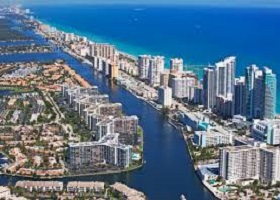
Day At Sea
Day At Sea
Day Santa Marta, ColombiaArrives 08:00 AM Departs 05:00 PM
Romantic Santa Marta has it all: history (Colombia's oldest city), natural beauty (from gentle bays and beaches to the highest coastal mountain range in the world), and its very own celebrity. Simon Bolivar (âThe Liberatorâ) is known as the George Washington of South America, and this was his Mount Vernon. Visit his beautiful estate or head to one of the two UNESCO Biosphere Reserves nearby.
Romantic Santa Marta has it all: history (Colombia's oldest city), natural beauty (from gentle bays and beaches to the highest coastal mountain range in the world), and its very own celebrity. Simon Bolivar (âThe Liberatorâ) is known as the George Washington of South America, and this was his Mount Vernon. Visit his beautiful estate or head to one of the two UNESCO Biosphere Reserves nearby.
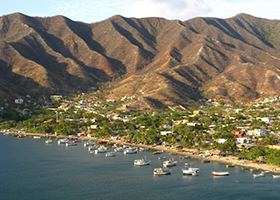
Day San Blas Islands, PanamaArrives 12:00 PM Departs 06:00 PM
An archipelago of 365 palm-fringed isles surrounded by coral reefs, the San Blas Islands (known to locals as Guna Yala, its official name since 2011, or by its former name of Kuna Yala) lie off Panamaââ¬â¢s northeast Caribbean coast. Fewer than 50 of the islands are inhabited, and on ones close to the mainland, residents live in thatched bamboo houses and get around by dugout canoes. Some outer islands are coconut plantations with a lone caretaker as the sole resident. An autonomous province of Panama since 1924, with its own constitution approved in 1945, the San Blas Islands are governed by the Kuna Indians, whose ancestors arrived in the early 19th century from the mainland along the Colombianââ¬âPanamanian border. The men farm bananas, plantains and coconuts, while the women, colorfully dressed and adorned with nose rings, metal bracelets and beads wrapped around their ankles and wrists, sell their handiwork to touristsââ¬âbeautiful reverse appliqué cloth panels known as molas. Here, you can experience a genuine slice of Central American culture from an indigenous people who are staunch protectors of their traditions and environment.
An archipelago of 365 palm-fringed isles surrounded by coral reefs, the San Blas Islands (known to locals as Guna Yala, its official name since 2011, or by its former name of Kuna Yala) lie off Panamaââ¬â¢s northeast Caribbean coast. Fewer than 50 of the islands are inhabited, and on ones close to the mainland, residents live in thatched bamboo houses and get around by dugout canoes. Some outer islands are coconut plantations with a lone caretaker as the sole resident. An autonomous province of Panama since 1924, with its own constitution approved in 1945, the San Blas Islands are governed by the Kuna Indians, whose ancestors arrived in the early 19th century from the mainland along the Colombianââ¬âPanamanian border. The men farm bananas, plantains and coconuts, while the women, colorfully dressed and adorned with nose rings, metal bracelets and beads wrapped around their ankles and wrists, sell their handiwork to touristsââ¬âbeautiful reverse appliqué cloth panels known as molas. Here, you can experience a genuine slice of Central American culture from an indigenous people who are staunch protectors of their traditions and environment.
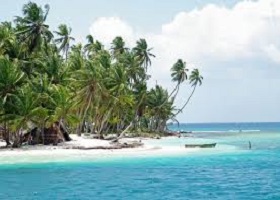
Day Enter Panama Canal Cristobal / Cruising Panama Canal / Exit Panama Canal BalboaArrives 05:00 AM Departs 05:00 AM / Cruising / Arrives 07:00 PM Departs 07:00 PM
Think of the Panama Canal, and the image that may come to mind is of the world's huge tankers and cruise ships passing through a series of locks. That, however, reflects only one aspect of this part of the world. As ships travel from the Atlantic to the Pacific, they also pass colonial towns, historic fortresses and manmade lakes that are today home to sanctuaries for hundreds of different animal and plant species. At the Atlantic entrance to the Panama Canal, Colón evokes the old Panama of yesteryear, with its historic buildings gradually being restored. Some 77 kilometers (48 miles) to the south, at the canal's Pacific entrance, Panama City's glittering skyline of office towers and condominiums reflects the country's dynamic present and future. Traveling between these two cities, an epic tale unfolds before youâan old-school feat of engineering, ambition and courage. As David McCullough recounts in his sweeping history The Path Between the Seas, it was a combination of sheer human might and engineering prowess that today allows ships to cross the Panama isthmus, saving sailors from making the dangerous, almost 13,000-kilometer (8,000-mile) journey around the tip of South America.
Cruising Panama Canal
"The construction of the Panama Canal is one of those epic tales from the past, an old-school feat of engineering, ambition and courage. A cruise along it today is a journey through the centuries, from the Spanish fortifications near Limón Bay to the glittering skyline of Panama City, not to mention the canal itself. Over the course of a decade a little more than a century ago, tens of thousands of workers drilled dynamite holes, drove belching steam shovels and labored with pickaxes, all the while fighting off malaria. While the French builders of the Suez Canal ultimately gave up in Panama, American crews persevered and created a route allowing ships to travel across a continent. As David McCullough recounts in his sweeping history The Path Between the Seas, it was a combination of sheer human might and engineering prowess. In 2016 an expansion more than doubled the canal's capacity, ensuring it will continue to be central to the world's maritime traffic."
Exit Panama Canal Balboa
"At the end of your journey along the Panama Canal, you'll reach Balboa, the town that sits at the Pacific entrance of the canal. Its namesake is Vasco Núñez de Balboa, the famed Spanish explorer who was the first European to see the Pacific from the New World. Balboa's journey was historic, a legendary feat of the age of exploration. The construction of the canal that crosses the isthmus today was also a historic achievement, to this day the largest civil engineering project ever. Over the course of a decade at the beginning of the 20th century, a combination of sheer human might and engineering prowess was responsible for the construction of the canal. A journey from Colón, at the Caribbean end of the canal, to Balboa, at its Pacific end, allows you to marvel at this world wonder, as well as see colonial towns, historic fortresses and sanctuaries for Panama's wildlife along the way. Measured by miles, the journey along the canal is relatively short, but it is one with an epic sweep. You will follow in the footsteps of giants from Balboa to the workers who built the canal. "
Think of the Panama Canal, and the image that may come to mind is of the world's huge tankers and cruise ships passing through a series of locks. That, however, reflects only one aspect of this part of the world. As ships travel from the Atlantic to the Pacific, they also pass colonial towns, historic fortresses and manmade lakes that are today home to sanctuaries for hundreds of different animal and plant species. At the Atlantic entrance to the Panama Canal, Colón evokes the old Panama of yesteryear, with its historic buildings gradually being restored. Some 77 kilometers (48 miles) to the south, at the canal's Pacific entrance, Panama City's glittering skyline of office towers and condominiums reflects the country's dynamic present and future. Traveling between these two cities, an epic tale unfolds before youâan old-school feat of engineering, ambition and courage. As David McCullough recounts in his sweeping history The Path Between the Seas, it was a combination of sheer human might and engineering prowess that today allows ships to cross the Panama isthmus, saving sailors from making the dangerous, almost 13,000-kilometer (8,000-mile) journey around the tip of South America.
Cruising Panama Canal
"The construction of the Panama Canal is one of those epic tales from the past, an old-school feat of engineering, ambition and courage. A cruise along it today is a journey through the centuries, from the Spanish fortifications near Limón Bay to the glittering skyline of Panama City, not to mention the canal itself. Over the course of a decade a little more than a century ago, tens of thousands of workers drilled dynamite holes, drove belching steam shovels and labored with pickaxes, all the while fighting off malaria. While the French builders of the Suez Canal ultimately gave up in Panama, American crews persevered and created a route allowing ships to travel across a continent. As David McCullough recounts in his sweeping history The Path Between the Seas, it was a combination of sheer human might and engineering prowess. In 2016 an expansion more than doubled the canal's capacity, ensuring it will continue to be central to the world's maritime traffic."
Exit Panama Canal Balboa
"At the end of your journey along the Panama Canal, you'll reach Balboa, the town that sits at the Pacific entrance of the canal. Its namesake is Vasco Núñez de Balboa, the famed Spanish explorer who was the first European to see the Pacific from the New World. Balboa's journey was historic, a legendary feat of the age of exploration. The construction of the canal that crosses the isthmus today was also a historic achievement, to this day the largest civil engineering project ever. Over the course of a decade at the beginning of the 20th century, a combination of sheer human might and engineering prowess was responsible for the construction of the canal. A journey from Colón, at the Caribbean end of the canal, to Balboa, at its Pacific end, allows you to marvel at this world wonder, as well as see colonial towns, historic fortresses and sanctuaries for Panama's wildlife along the way. Measured by miles, the journey along the canal is relatively short, but it is one with an epic sweep. You will follow in the footsteps of giants from Balboa to the workers who built the canal. "
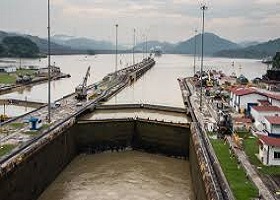
Day At Sea
Day Manta, EcuadorArrives 05:00 AM Departs 08:00 PM
"Located on the Pacific coast, Manta is one of Ecuador's most important ports. The mainstay of the economy of this city with some 200,000 residents is tunaâboth fishing and the processing and canning of the catch. In other words, unless you have a keen interest in the tuna industry, Manta will, most likely, simply be a stopping point to other destinations in the country like Quito, the Galápagos and the haciendas in the foothills of the Andes. Even so, Manta is a pleasant port town with some contemporary buildings and a few historic sights, interesting museums and natural beauty in the form of parks and nearby beaches. Neither the Galápagos nor the country's capital, Quito, can be visited as a day trip from Manta. If you have extra time before or after you reach Manta, however, it's a short flight to both. Still not enough time? Isla Corazón, to the north, and Machalilla National Park, to the south, provide introductions to the flora and fauna of equatorial rain forests. If even those destinations are too far, the city's archaeological museum is highly recommended, and a walk along the Malecón pairs ocean views with cooling breezes. "
"Located on the Pacific coast, Manta is one of Ecuador's most important ports. The mainstay of the economy of this city with some 200,000 residents is tunaâboth fishing and the processing and canning of the catch. In other words, unless you have a keen interest in the tuna industry, Manta will, most likely, simply be a stopping point to other destinations in the country like Quito, the Galápagos and the haciendas in the foothills of the Andes. Even so, Manta is a pleasant port town with some contemporary buildings and a few historic sights, interesting museums and natural beauty in the form of parks and nearby beaches. Neither the Galápagos nor the country's capital, Quito, can be visited as a day trip from Manta. If you have extra time before or after you reach Manta, however, it's a short flight to both. Still not enough time? Isla Corazón, to the north, and Machalilla National Park, to the south, provide introductions to the flora and fauna of equatorial rain forests. If even those destinations are too far, the city's archaeological museum is highly recommended, and a walk along the Malecón pairs ocean views with cooling breezes. "
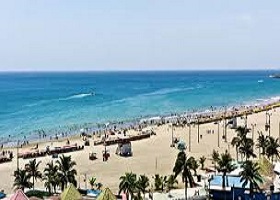
Day At Sea
Day Callao (Lima), PeruArrives 04:00 PM
A 45-minute drive from the port city of Callao brings you to exciting Lima, the City of Kings. From its founding in 1535 until today, it remains one of the most important cities in all South America. The handsome old buildings from the earliest colonial days surrounding the Plaza de Armas contrast with the soaring modern towers rising in the newer sections of the city.
A 45-minute drive from the port city of Callao brings you to exciting Lima, the City of Kings. From its founding in 1535 until today, it remains one of the most important cities in all South America. The handsome old buildings from the earliest colonial days surrounding the Plaza de Armas contrast with the soaring modern towers rising in the newer sections of the city.
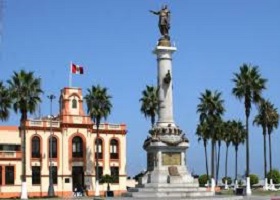
Day Callao (Lima), Peru--
A 45-minute drive from the port city of Callao brings you to exciting Lima, the City of Kings. From its founding in 1535 until today, it remains one of the most important cities in all South America. The handsome old buildings from the earliest colonial days surrounding the Plaza de Armas contrast with the soaring modern towers rising in the newer sections of the city.
A 45-minute drive from the port city of Callao brings you to exciting Lima, the City of Kings. From its founding in 1535 until today, it remains one of the most important cities in all South America. The handsome old buildings from the earliest colonial days surrounding the Plaza de Armas contrast with the soaring modern towers rising in the newer sections of the city.

Day Callao (Lima), PeruDeparts 06:00 PM
A 45-minute drive from the port city of Callao brings you to exciting Lima, the City of Kings. From its founding in 1535 until today, it remains one of the most important cities in all South America. The handsome old buildings from the earliest colonial days surrounding the Plaza de Armas contrast with the soaring modern towers rising in the newer sections of the city.
A 45-minute drive from the port city of Callao brings you to exciting Lima, the City of Kings. From its founding in 1535 until today, it remains one of the most important cities in all South America. The handsome old buildings from the earliest colonial days surrounding the Plaza de Armas contrast with the soaring modern towers rising in the newer sections of the city.

Day General San Martin (Pisco), PeruArrives 08:00 AM Departs 05:00 PM
Pisco dates from 1640, and its Plaza de Armas is a Spanish colonial treasure. Another treasure is the Ballestas Islands, an offshore cluster of rocky outcroppings teeming with seabirds, penguins, sea lions, dolphins and other wildlife. Many visitors take the opportunity to take a scenic flight over the huge, mysterious Nazca Lines pictographs etched into the nearby desert surface 2,000 years ago. And still more belly up to a bar to sample a Pisco Sour cocktail made with the Pisco brandy distilled from locally grown grapes.
Pisco dates from 1640, and its Plaza de Armas is a Spanish colonial treasure. Another treasure is the Ballestas Islands, an offshore cluster of rocky outcroppings teeming with seabirds, penguins, sea lions, dolphins and other wildlife. Many visitors take the opportunity to take a scenic flight over the huge, mysterious Nazca Lines pictographs etched into the nearby desert surface 2,000 years ago. And still more belly up to a bar to sample a Pisco Sour cocktail made with the Pisco brandy distilled from locally grown grapes.
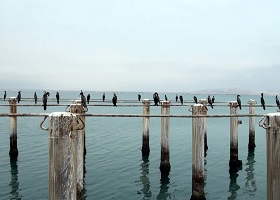
Day At Sea
Day Matarani, PeruArrives 08:00 AM Departs 05:00 PM
Shaped like an exuberant sea horse standing on its head, Mayotte is the most southerly and oldest of the Comoros islands, with relatively low, rounded hills and a prominent circling coral reef. A collective Territory of France, its inhabitants are EC citizens. This "island" actually consists of three main islands: Grande Terre, Petite Terre, and the rock of Dzaoudzi, and is a remarkable natural environment filled with birds, lemurs and numerous species of flora and other fauna.
Shaped like an exuberant sea horse standing on its head, Mayotte is the most southerly and oldest of the Comoros islands, with relatively low, rounded hills and a prominent circling coral reef. A collective Territory of France, its inhabitants are EC citizens. This "island" actually consists of three main islands: Grande Terre, Petite Terre, and the rock of Dzaoudzi, and is a remarkable natural environment filled with birds, lemurs and numerous species of flora and other fauna.
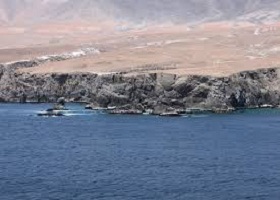
Day Iquique, ChileArrives 08:00 AM Departs 05:00 PM
Iquique was the undisputed capital of the saltpeter, or nitrate industry from the 1860s to 1920. The town's historic center evinces this period with its many fine palatial buildings. After the Germans invented chemical fertilizer shortly before WWII, the nitrate industry collapsed and the city fell into decay. Today Iquique's economy is supported by its fishing industry and its tax free status. Driving outside the city into the desert, one can find many interesting well-preserved ghost towns that remain from the nitrate industry's hey-day. Some, including Humberstone, are now classified national monuments.
Iquique was the undisputed capital of the saltpeter, or nitrate industry from the 1860s to 1920. The town's historic center evinces this period with its many fine palatial buildings. After the Germans invented chemical fertilizer shortly before WWII, the nitrate industry collapsed and the city fell into decay. Today Iquique's economy is supported by its fishing industry and its tax free status. Driving outside the city into the desert, one can find many interesting well-preserved ghost towns that remain from the nitrate industry's hey-day. Some, including Humberstone, are now classified national monuments.
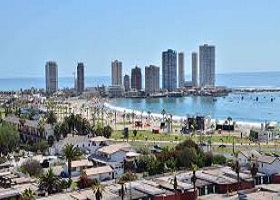
Day Antofagasta, ChileArrives 08:00 AM Departs 05:00 PM
A busy port hard by the arid and mysterious Atacama Desert of Northern Chile. With the wealth generated by minerals flowing from the barren land, they've managed to build a pleasant town of parks and plazas, conquering, for a while, the emptiness beyond. See the English clock ensconced in the Plaza Colon by British residents, and the uniquely hybrid architecture of the Customs House. In the manicured gardens and verges along Avenida O'Higgins, soil imported as ballast aboard visiting ore ships was used to augment the desert sands and nourish the greenery.
A busy port hard by the arid and mysterious Atacama Desert of Northern Chile. With the wealth generated by minerals flowing from the barren land, they've managed to build a pleasant town of parks and plazas, conquering, for a while, the emptiness beyond. See the English clock ensconced in the Plaza Colon by British residents, and the uniquely hybrid architecture of the Customs House. In the manicured gardens and verges along Avenida O'Higgins, soil imported as ballast aboard visiting ore ships was used to augment the desert sands and nourish the greenery.
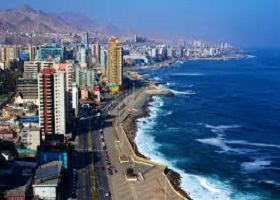
Day At Sea
Day San Antonio (Santiago), ChileArrives 08:00 AM Departs 05:00 PM
"A day or two of sightseeing is all it takes for visitors to ValparaÃso and Santiago to fall in love. They'll find great places to eat, stunning architecture, fascinating museums to visit and myriad things to do in these diverse and extraordinary cities. Color dominates the seaport city of ValparaÃso: Brightly painted houses cling intrepidly to steep hillsides along labyrinthine streets that rise from the blue Pacific. The harbor is busy with fishing boats, cargo ships, and naval vessels. Rich in naval and commercial history, ValparaÃso suffered from the opening of the Panama Canal, and this decline is still apparent in the ramshackle charm of many structures. Nevertheless, ValparaÃso is having a renaissance on all fronts, and its bohemian culture and emphasis on the arts are felt and seen everywhere. For a visitor, the city itself is the main attraction, and a walking tour amply repays the effort: Street art abounds along the route to Pablo Neruda's house, La Sebastiana; the Iglesia de la Matriz; the Naval Museum; and even the funiculars that carry you up the steep hills. In 2003, validating the enduring pride of porteños, as the locals are called, UNESCO designated one-fourth of ValparaÃso a World Heritage Site. Stately and monumental Santiago, 120 kilometers (75 miles) inland, is encircled by the Andes. Santiago offers the visitor such important museums and public buildings as the Museo Precolombino and Palacio and Centro Cultural de La Moneda. A walk along Paseo Ahumada to the Plaza de Armas and thence to the old Mercado Central gives a taste of many different facets of the city. "
"A day or two of sightseeing is all it takes for visitors to ValparaÃso and Santiago to fall in love. They'll find great places to eat, stunning architecture, fascinating museums to visit and myriad things to do in these diverse and extraordinary cities. Color dominates the seaport city of ValparaÃso: Brightly painted houses cling intrepidly to steep hillsides along labyrinthine streets that rise from the blue Pacific. The harbor is busy with fishing boats, cargo ships, and naval vessels. Rich in naval and commercial history, ValparaÃso suffered from the opening of the Panama Canal, and this decline is still apparent in the ramshackle charm of many structures. Nevertheless, ValparaÃso is having a renaissance on all fronts, and its bohemian culture and emphasis on the arts are felt and seen everywhere. For a visitor, the city itself is the main attraction, and a walking tour amply repays the effort: Street art abounds along the route to Pablo Neruda's house, La Sebastiana; the Iglesia de la Matriz; the Naval Museum; and even the funiculars that carry you up the steep hills. In 2003, validating the enduring pride of porteños, as the locals are called, UNESCO designated one-fourth of ValparaÃso a World Heritage Site. Stately and monumental Santiago, 120 kilometers (75 miles) inland, is encircled by the Andes. Santiago offers the visitor such important museums and public buildings as the Museo Precolombino and Palacio and Centro Cultural de La Moneda. A walk along Paseo Ahumada to the Plaza de Armas and thence to the old Mercado Central gives a taste of many different facets of the city. "
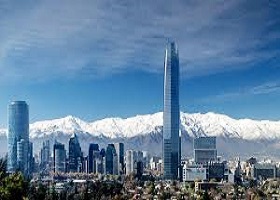
Day At Sea
Day Isla Robinson Crusoe, ChileArrives 08:00 AM Departs 05:00 PM
Isla Robinson Crusoe, formerly Más a Tierra, is the largest island of Juan Fernández Archipelago National Park (which also includes two uninhabited islands, Alexander Selkirk and Santa Clara) in Chile. The island's name is inspired by the fact that Alexander Selkirk, the person who was perhaps the real-life inspiration for Robinson Crusoe, spent four years here as a castaway from 1704 to 1708. Even to this day, the island remains remote, sitting 670 kilometers (416 miles) off the coast of Chileâa journey of up to two days by ship, though less than two hours by plane.
Isla Robinson Crusoe, formerly Más a Tierra, is the largest island of Juan Fernández Archipelago National Park (which also includes two uninhabited islands, Alexander Selkirk and Santa Clara) in Chile. The island's name is inspired by the fact that Alexander Selkirk, the person who was perhaps the real-life inspiration for Robinson Crusoe, spent four years here as a castaway from 1704 to 1708. Even to this day, the island remains remote, sitting 670 kilometers (416 miles) off the coast of Chileâa journey of up to two days by ship, though less than two hours by plane.
Day At Sea
Day Castro, Isla Chiloe, ChileArrives 08:00 AM Departs 05:00 PM
"Founded in 1567 by the Spanish, Castro is Chile's third-oldest city and home to roughly 29,000 people. It is the transportation hub and tourism center of Chiloéâa 41-island archipelago which includes Isla Grande de Chiloé, the continent's fifth-largest island and where Castro is found. Traces of the area's past can be found in the historic churchesâ16 of which are UNESCO World Heritage Sitesâthat dot the isle. Another form of arresting architecture exists in the palafitos, the region's unique waterfront wooden homes that sit atop stilts. The city of Castro itself is a walker's paradise. A stroll south from the main square (the Plaza de Armas, where the Iglesia de San Francisco is located) to the Museo Regional and on to the Mercado Artesanal de Castro along the coast provides a delightful itinerary. Just outside the town center is the Museo de Arte Moderno on a hilltop in a municipal park, where there are lovely views of the city and the bay. Each February, the Festival Costumbrista of Chilote food, crafts, music and dance takes over the area and is equally popular with locals and visitors to Castro. "
"Founded in 1567 by the Spanish, Castro is Chile's third-oldest city and home to roughly 29,000 people. It is the transportation hub and tourism center of Chiloéâa 41-island archipelago which includes Isla Grande de Chiloé, the continent's fifth-largest island and where Castro is found. Traces of the area's past can be found in the historic churchesâ16 of which are UNESCO World Heritage Sitesâthat dot the isle. Another form of arresting architecture exists in the palafitos, the region's unique waterfront wooden homes that sit atop stilts. The city of Castro itself is a walker's paradise. A stroll south from the main square (the Plaza de Armas, where the Iglesia de San Francisco is located) to the Museo Regional and on to the Mercado Artesanal de Castro along the coast provides a delightful itinerary. Just outside the town center is the Museo de Arte Moderno on a hilltop in a municipal park, where there are lovely views of the city and the bay. Each February, the Festival Costumbrista of Chilote food, crafts, music and dance takes over the area and is equally popular with locals and visitors to Castro. "
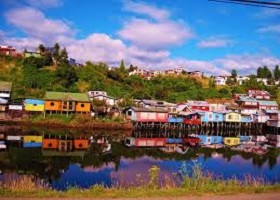
Day Puerto Chacabuco, ChileArrives 08:00 AM Departs 05:00 PM
"The tiny town of Puerto Chacabuco, with just over 1,000 residents, sits at the head of the Aisén Fjord. Even residents will acknowledge that there isn't much to see in the town itself, which only recently bothered to put up street signs; the largest building is a fish-processing plant. It won't take much more than a quick stroll to explore the entire municipality. Though this modest port may be lacking in compelling attractions, it is the gateway to some of the most beautiful sights in this part of Chilean Patagonia. Many visitors choose to drive to the provincial capital, Coihaique, or Puerto Aisén, a city that straddles the Aisén River and is less than 20 minutes by car from Puerto Chacabuco. In both you can find options to shop for handicrafts and excellent local restaurants. To experience the natural beauty of the region, head to the RÃo Simpson National Reserve for stunning vistas, pristine waterfalls and crystal-clear canyon riversâwhich are especially famous for their fantastic fly fishing and their enormous brown and rainbow trout. It doesn't take long to get from Puerto Chacabuco to these nearby sights, so avoid the temptation to stay on board your ship and instead put on your walking shoes and go witness some of the wonders of this part of Chile. "
"The tiny town of Puerto Chacabuco, with just over 1,000 residents, sits at the head of the Aisén Fjord. Even residents will acknowledge that there isn't much to see in the town itself, which only recently bothered to put up street signs; the largest building is a fish-processing plant. It won't take much more than a quick stroll to explore the entire municipality. Though this modest port may be lacking in compelling attractions, it is the gateway to some of the most beautiful sights in this part of Chilean Patagonia. Many visitors choose to drive to the provincial capital, Coihaique, or Puerto Aisén, a city that straddles the Aisén River and is less than 20 minutes by car from Puerto Chacabuco. In both you can find options to shop for handicrafts and excellent local restaurants. To experience the natural beauty of the region, head to the RÃo Simpson National Reserve for stunning vistas, pristine waterfalls and crystal-clear canyon riversâwhich are especially famous for their fantastic fly fishing and their enormous brown and rainbow trout. It doesn't take long to get from Puerto Chacabuco to these nearby sights, so avoid the temptation to stay on board your ship and instead put on your walking shoes and go witness some of the wonders of this part of Chile. "
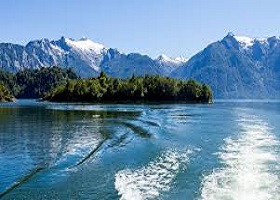
Day Chilean FjordsCruising Only
"Much like the Norwegian coastline, the west coast of Chile is sliced by dramatic inlets, or fjords, lined with rugged mountains and glacier-covered valleys. This spectacular stretch of coastline starts near the Reloncavà Estuary (roughly halfway down the long spine of Chile) and extends south to the very end of the continent, at Tierra del Fuego. It's a distance of some 1,500 kilometers (930 miles), as the crow flies. Travel here, however, is never in a straight lineâinstead ships follow meandering paths along the many fjords and channels. The area is known for its desolate beauty and not surprisingly it's home to many of Chile's national parks, including Alerce Andino, Hornopirén and Vicente Pérez Rosales, as well as the Llanquihue National Reserve and the Cochamó Valley. Early Spanish explorers came here in search of the mythical City of the Caesars, whose people were believed to be rich in gold and diamonds. Though the city was never found, the explorers added much to the world's navigational knowledge and at the same time established shipping routes that have been used ever since. Similarly, the riches that travelers to the region today discover are measured not in ounces or carats but in gasps of wonder at the stunning scenery of this windswept, dramatic land and its unusual animal residents. "
"Much like the Norwegian coastline, the west coast of Chile is sliced by dramatic inlets, or fjords, lined with rugged mountains and glacier-covered valleys. This spectacular stretch of coastline starts near the Reloncavà Estuary (roughly halfway down the long spine of Chile) and extends south to the very end of the continent, at Tierra del Fuego. It's a distance of some 1,500 kilometers (930 miles), as the crow flies. Travel here, however, is never in a straight lineâinstead ships follow meandering paths along the many fjords and channels. The area is known for its desolate beauty and not surprisingly it's home to many of Chile's national parks, including Alerce Andino, Hornopirén and Vicente Pérez Rosales, as well as the Llanquihue National Reserve and the Cochamó Valley. Early Spanish explorers came here in search of the mythical City of the Caesars, whose people were believed to be rich in gold and diamonds. Though the city was never found, the explorers added much to the world's navigational knowledge and at the same time established shipping routes that have been used ever since. Similarly, the riches that travelers to the region today discover are measured not in ounces or carats but in gasps of wonder at the stunning scenery of this windswept, dramatic land and its unusual animal residents. "
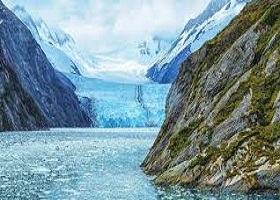
Day Scenic cruising Amalia or Brujo Glacier / Canal Sarmiento / Strait of MagellanCruising Only
Scenic cruising Amalia or Brujo Glacier
Canal Sarmiento
One of the main channels in Patagonia, the Sarmiento Channel runs in a north-south direction, starting at the GuÃa Narrows and finishing at the southern edge of Victoria Pass, where it joins the Smyth Channel. The Kawesqar people have inhabited this region for more than 6,000 years, but the channel was named for a more recent arrival: the Spanish explorer Pedro Sarmiento de Gamboa, who first navigated it between 1579 and 1580. The Chilean mainland lies to the east, and the islands of Esperanza, Vancouver and Piazzi flank the channel to the west. As elsewhere in the Chilean fjord region, the ragged coastline is cut with inlets set among snow-covered mountain ranges. In many places, massive glaciers run down to the sea. All kinds of marine animals, including Magellanic penguins, southern elephant seals, dolphins and orcas, can be seen along these shores.
Strait of Magellan
The Strait of Magellan is one of the world's most important natural waterways, linking the Pacific and Atlantic Oceans. The strait passes below Chile and above Tierra del Fuego and Antarctica. The strait was named after the man that first navigated the waterway, Ferdinand Magellan, on his famous voyage as the first person to circumnavigate the entire globe.
Scenic cruising Amalia or Brujo Glacier
Canal Sarmiento
One of the main channels in Patagonia, the Sarmiento Channel runs in a north-south direction, starting at the GuÃa Narrows and finishing at the southern edge of Victoria Pass, where it joins the Smyth Channel. The Kawesqar people have inhabited this region for more than 6,000 years, but the channel was named for a more recent arrival: the Spanish explorer Pedro Sarmiento de Gamboa, who first navigated it between 1579 and 1580. The Chilean mainland lies to the east, and the islands of Esperanza, Vancouver and Piazzi flank the channel to the west. As elsewhere in the Chilean fjord region, the ragged coastline is cut with inlets set among snow-covered mountain ranges. In many places, massive glaciers run down to the sea. All kinds of marine animals, including Magellanic penguins, southern elephant seals, dolphins and orcas, can be seen along these shores.
Strait of Magellan
The Strait of Magellan is one of the world's most important natural waterways, linking the Pacific and Atlantic Oceans. The strait passes below Chile and above Tierra del Fuego and Antarctica. The strait was named after the man that first navigated the waterway, Ferdinand Magellan, on his famous voyage as the first person to circumnavigate the entire globe.
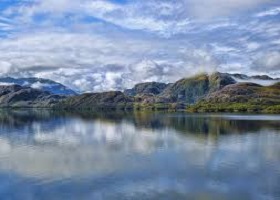
Day Punta Arenas, Chile / Cockburn Channel / Beagle ChannelArrives 07:00 AM Departs 08:00 PM / Cruising / Cruising
If Punta Arenas exudes an "edge of the world" air, it's not without reason. This windblown city near Chile's southernmost tip sits on the Strait of Magellan, which itself is positioned squarely between the Atlantic and Pacific oceans. The city has playedâand continues to playâan important role in geographic, political and economic affairs in South America's so-called Southern Cone, which is formed by Chile and neighboring Argentina. Too many travelers rush through Punta Arenas, treating it as a pit stop on their way to the stunningly beautiful landscapes of Torres del Paine National Park and other attractions in Patagonia, but there's plenty in this city and its environs to experience, too. From penguin spotting on Isla Magdalena and kayaking the Strait of Magellan to visiting area farms and then indulging in surf-and-turf specialties (here meaning fresh seafood and asado, or Chilean barbecue) at local restaurants, Punta Arenas is worth a stopover all its own.
Cockburn Channel
"As you near the southern tip of South America, traveling along the Chilean or Pacific coast, you'll know that you're approaching the Cockburn (pronounced ""CO-burn"") Channel when you see the twin rocks that guard its entrance. The channel flows between the Brecknock Peninsula (the westernmost edge of Isla Grande de Tierra del Fuego) and a number of islands, including Clarence Island with its irregular coastline of dramatic sounds that reach deep into its interior. The channel is part of the route that connects the Strait of Magellan to the Beagle Channel, while along both sides of the waterway is one of the crown jewels of Chile's network of parks: Alberto de Agostini National Park."
Beagle Channel
Running through the Tierra del Fuego archipelago, the Beagle Channel is a scenic and wonderfully calm strait that has become a hugely popular cruise destination. Named in 1830 after a charting voyage by the HMS Beagleâthe ship that later became famous for carrying English naturalist Charles Darwin on his five-year journey of discoveryâthe channel is one of a trio of navigable passages around the tip of South America. Some 240 kilometers long (almost 150 miles), the channel extends from Nueva Island in the east to Darwin Sound and Cook Bay in the west. Its western end lies within Chile, and its eastern end forms a segment of the border between Chile and Argentina. By far the largest sight along the channel is the town of Ushuaia in Argentina, which has much to offer the day-tripper or overnight visitor. Other highlights of a cruise include a slew of natural sights, from views of snow-covered glaciers to wildlife spotting at Isla de los Lobos (also called Sea Lion Island) and Isla de los Pájaros (Bird Island).
If Punta Arenas exudes an "edge of the world" air, it's not without reason. This windblown city near Chile's southernmost tip sits on the Strait of Magellan, which itself is positioned squarely between the Atlantic and Pacific oceans. The city has playedâand continues to playâan important role in geographic, political and economic affairs in South America's so-called Southern Cone, which is formed by Chile and neighboring Argentina. Too many travelers rush through Punta Arenas, treating it as a pit stop on their way to the stunningly beautiful landscapes of Torres del Paine National Park and other attractions in Patagonia, but there's plenty in this city and its environs to experience, too. From penguin spotting on Isla Magdalena and kayaking the Strait of Magellan to visiting area farms and then indulging in surf-and-turf specialties (here meaning fresh seafood and asado, or Chilean barbecue) at local restaurants, Punta Arenas is worth a stopover all its own.
Cockburn Channel
"As you near the southern tip of South America, traveling along the Chilean or Pacific coast, you'll know that you're approaching the Cockburn (pronounced ""CO-burn"") Channel when you see the twin rocks that guard its entrance. The channel flows between the Brecknock Peninsula (the westernmost edge of Isla Grande de Tierra del Fuego) and a number of islands, including Clarence Island with its irregular coastline of dramatic sounds that reach deep into its interior. The channel is part of the route that connects the Strait of Magellan to the Beagle Channel, while along both sides of the waterway is one of the crown jewels of Chile's network of parks: Alberto de Agostini National Park."
Beagle Channel
Running through the Tierra del Fuego archipelago, the Beagle Channel is a scenic and wonderfully calm strait that has become a hugely popular cruise destination. Named in 1830 after a charting voyage by the HMS Beagleâthe ship that later became famous for carrying English naturalist Charles Darwin on his five-year journey of discoveryâthe channel is one of a trio of navigable passages around the tip of South America. Some 240 kilometers long (almost 150 miles), the channel extends from Nueva Island in the east to Darwin Sound and Cook Bay in the west. Its western end lies within Chile, and its eastern end forms a segment of the border between Chile and Argentina. By far the largest sight along the channel is the town of Ushuaia in Argentina, which has much to offer the day-tripper or overnight visitor. Other highlights of a cruise include a slew of natural sights, from views of snow-covered glaciers to wildlife spotting at Isla de los Lobos (also called Sea Lion Island) and Isla de los Pájaros (Bird Island).

Day Scenic Cruising Glacier Alley / Scenic Cruising Cape HornCruising Only
"As alleys go, this one is mighty long. Glacier Alleyâor, as it's more elegantly known, Avenue of the Glaciersâstretches along a good portion of the celebrated 240-kilometer-long (150-mile-long) Beagle Channel in the vast territory of Tierra del Fuego. Argentina's Ushuaia and Chile's Puerto Williams, both common starting points for travelers exploring Glacier Alley, are two of the world's southernmost towns. As you travel into the Beagle Channel, the vital waterway that allowed ships to avoid the hellish fury of the waters around Cape Horn, you follow the route that the famous HMS Beagle took with a young and then-unknown geologist and naturalist on board, Charles Darwin. While fighting the harsh elements, and with no creature comforts like the ones enjoyed today, those early sailors were at least treated to one stunning glacier after another, each flowing down from massive mountain ranges and peaks such as the snowcapped one named for Darwin himself. Even if your journey is shrouded in foggy mist, you can't miss the cracking sound of the blue ice as it tumbles into the channel or the rush of ice-melt waterfalls. Along with all these natural wonders, a visit to Glacier Alley comes with opportunities to see penguin rookeries, humpback whales and seals."
Scenic Cruising Cape Horn
"It may be the most notorious ocean passage in the world, and for centuries it evoked dread in the hearts of sailors. But those who survived a trip around Cape Horn, where the Atlantic and Pacific slosh violently into each other, had bragging rights for life. Along this passage, the Tierra del Fuego, or ""land of fire,"" where Chile and Argentina converge at the bottom of the world, got its name from early sailors who saw the fires of the people who lived here burning on shore. For some 8,000 years, until as recently as the end of the 19th century, this was the home of the Yaghan and other indigenous groups. Magellan and Drake left their mark and names here, as did Darwin, who sailed through here on the HMS Beagle. The great clipper ships of '49er lore later fought their way through fierce waves carrying gold between California and the East Coast in that era before the Panama Canal. Just as Richard Henry Dana, Jr., described in his masterful Two Years Before the Mast, published in 1840, a journey today around the Cape at the very bottom of the Tierra is shaped by capricious weather, as powerful winds and shallow waters can produce waves that reach as high as 30 meters (100 feet)."
"As alleys go, this one is mighty long. Glacier Alleyâor, as it's more elegantly known, Avenue of the Glaciersâstretches along a good portion of the celebrated 240-kilometer-long (150-mile-long) Beagle Channel in the vast territory of Tierra del Fuego. Argentina's Ushuaia and Chile's Puerto Williams, both common starting points for travelers exploring Glacier Alley, are two of the world's southernmost towns. As you travel into the Beagle Channel, the vital waterway that allowed ships to avoid the hellish fury of the waters around Cape Horn, you follow the route that the famous HMS Beagle took with a young and then-unknown geologist and naturalist on board, Charles Darwin. While fighting the harsh elements, and with no creature comforts like the ones enjoyed today, those early sailors were at least treated to one stunning glacier after another, each flowing down from massive mountain ranges and peaks such as the snowcapped one named for Darwin himself. Even if your journey is shrouded in foggy mist, you can't miss the cracking sound of the blue ice as it tumbles into the channel or the rush of ice-melt waterfalls. Along with all these natural wonders, a visit to Glacier Alley comes with opportunities to see penguin rookeries, humpback whales and seals."
Scenic Cruising Cape Horn
"It may be the most notorious ocean passage in the world, and for centuries it evoked dread in the hearts of sailors. But those who survived a trip around Cape Horn, where the Atlantic and Pacific slosh violently into each other, had bragging rights for life. Along this passage, the Tierra del Fuego, or ""land of fire,"" where Chile and Argentina converge at the bottom of the world, got its name from early sailors who saw the fires of the people who lived here burning on shore. For some 8,000 years, until as recently as the end of the 19th century, this was the home of the Yaghan and other indigenous groups. Magellan and Drake left their mark and names here, as did Darwin, who sailed through here on the HMS Beagle. The great clipper ships of '49er lore later fought their way through fierce waves carrying gold between California and the East Coast in that era before the Panama Canal. Just as Richard Henry Dana, Jr., described in his masterful Two Years Before the Mast, published in 1840, a journey today around the Cape at the very bottom of the Tierra is shaped by capricious weather, as powerful winds and shallow waters can produce waves that reach as high as 30 meters (100 feet)."
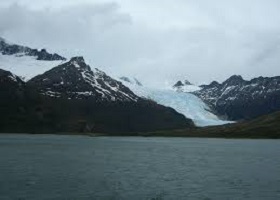
Day Ushuaia, ArgentinaArrives 06:00 AM Departs 08:00 PM
"Dramatic, fantastical, otherworldlyâthis is the end of the world, for real. Positioned at the southernmost tip of Argentina, this memorable port town is cradled between the pristineâand toweringâMartial Mountains and accessed by the picturesque Beagle Channel (which was named for Darwin's famed vessel). Ushuaia is the capital of the Tierra del Fuego region, which is best described as a spectacular collection of superlative natural wonders. It's a veritable kaleidoscope of glittering glaciers, snowcapped mountains, dense forests, sparkling lakes and windswept plains spread across an archipelago of rugged islands. The town itself is a maze of streets lined with low-slung buildings that all seem to meet at its heart, the port. Founded in 1884, the far-flung spot welcomed missionaries, gold prospectors and naval officers before becoming known primarily as a penal colony. After its closure under the infamous Argentine leader Juan Perón, the large jail was reconfigured to house one of the city's most popular museums. Other current in-town attractions include a maritime museum and a museum dedicated to the region's natural history, as well as restaurants preparing the marquee offeringâlocal king crab. "
"Dramatic, fantastical, otherworldlyâthis is the end of the world, for real. Positioned at the southernmost tip of Argentina, this memorable port town is cradled between the pristineâand toweringâMartial Mountains and accessed by the picturesque Beagle Channel (which was named for Darwin's famed vessel). Ushuaia is the capital of the Tierra del Fuego region, which is best described as a spectacular collection of superlative natural wonders. It's a veritable kaleidoscope of glittering glaciers, snowcapped mountains, dense forests, sparkling lakes and windswept plains spread across an archipelago of rugged islands. The town itself is a maze of streets lined with low-slung buildings that all seem to meet at its heart, the port. Founded in 1884, the far-flung spot welcomed missionaries, gold prospectors and naval officers before becoming known primarily as a penal colony. After its closure under the infamous Argentine leader Juan Perón, the large jail was reconfigured to house one of the city's most popular museums. Other current in-town attractions include a maritime museum and a museum dedicated to the region's natural history, as well as restaurants preparing the marquee offeringâlocal king crab. "
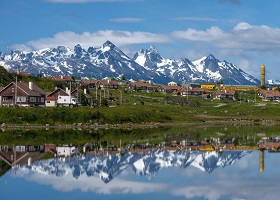
Day At Sea
Day Antarctic ExperienceArrives 08:00 AM Departs 06:00 PM
After a day and a half crossing the Drake Passage, which separates South America from Antarctica, your ship will arrive at the White Continent. On your Antarctic Expedition you will sail through the bays and islands of the Palmer Archipelago, off the northern tip of the long Antarctic Peninsula, which reaches out toward South America.Encircled in a landscape of snow and ice in every direction, your ship will slowly navigate the iceberg-dotted waters. The surroundings are hauntingly quiet as well, an aspect of the continent that comes as a surprise to many first-time visitors. Along the way, the ship's naturalists will point out the birdsââ¬âterns, petrels, and gullsââ¬âfound on the coast and on small islets at stops like Dallmann Bay. As you pass dark, rocky Cuverville Island, youââ¬â¢ll see some of the 6,500 pairs of gentoo penguins that make their home there, the largest known colony in the world. Continuing on to Paradise Harbor, you'll have a chance to observe not only gentoo and chinstrap penguins but possibly humans as well: Both Argentina and Chile have manned research stations here.
After a day and a half crossing the Drake Passage, which separates South America from Antarctica, your ship will arrive at the White Continent. On your Antarctic Expedition you will sail through the bays and islands of the Palmer Archipelago, off the northern tip of the long Antarctic Peninsula, which reaches out toward South America.Encircled in a landscape of snow and ice in every direction, your ship will slowly navigate the iceberg-dotted waters. The surroundings are hauntingly quiet as well, an aspect of the continent that comes as a surprise to many first-time visitors. Along the way, the ship's naturalists will point out the birdsââ¬âterns, petrels, and gullsââ¬âfound on the coast and on small islets at stops like Dallmann Bay. As you pass dark, rocky Cuverville Island, youââ¬â¢ll see some of the 6,500 pairs of gentoo penguins that make their home there, the largest known colony in the world. Continuing on to Paradise Harbor, you'll have a chance to observe not only gentoo and chinstrap penguins but possibly humans as well: Both Argentina and Chile have manned research stations here.
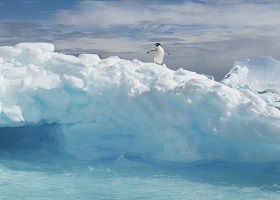
Day Antarctic ExperienceArrives 08:00 AM Departs 06:00 PM
After a day and a half crossing the Drake Passage, which separates South America from Antarctica, your ship will arrive at the White Continent. On your Antarctic Expedition you will sail through the bays and islands of the Palmer Archipelago, off the northern tip of the long Antarctic Peninsula, which reaches out toward South America.Encircled in a landscape of snow and ice in every direction, your ship will slowly navigate the iceberg-dotted waters. The surroundings are hauntingly quiet as well, an aspect of the continent that comes as a surprise to many first-time visitors. Along the way, the ship's naturalists will point out the birdsââ¬âterns, petrels, and gullsââ¬âfound on the coast and on small islets at stops like Dallmann Bay. As you pass dark, rocky Cuverville Island, youââ¬â¢ll see some of the 6,500 pairs of gentoo penguins that make their home there, the largest known colony in the world. Continuing on to Paradise Harbor, you'll have a chance to observe not only gentoo and chinstrap penguins but possibly humans as well: Both Argentina and Chile have manned research stations here.
After a day and a half crossing the Drake Passage, which separates South America from Antarctica, your ship will arrive at the White Continent. On your Antarctic Expedition you will sail through the bays and islands of the Palmer Archipelago, off the northern tip of the long Antarctic Peninsula, which reaches out toward South America.Encircled in a landscape of snow and ice in every direction, your ship will slowly navigate the iceberg-dotted waters. The surroundings are hauntingly quiet as well, an aspect of the continent that comes as a surprise to many first-time visitors. Along the way, the ship's naturalists will point out the birdsââ¬âterns, petrels, and gullsââ¬âfound on the coast and on small islets at stops like Dallmann Bay. As you pass dark, rocky Cuverville Island, youââ¬â¢ll see some of the 6,500 pairs of gentoo penguins that make their home there, the largest known colony in the world. Continuing on to Paradise Harbor, you'll have a chance to observe not only gentoo and chinstrap penguins but possibly humans as well: Both Argentina and Chile have manned research stations here.

Day Antarctic ExperienceArrives 08:00 AM Departs 06:00 PM
After a day and a half crossing the Drake Passage, which separates South America from Antarctica, your ship will arrive at the White Continent. On your Antarctic Expedition you will sail through the bays and islands of the Palmer Archipelago, off the northern tip of the long Antarctic Peninsula, which reaches out toward South America.Encircled in a landscape of snow and ice in every direction, your ship will slowly navigate the iceberg-dotted waters. The surroundings are hauntingly quiet as well, an aspect of the continent that comes as a surprise to many first-time visitors. Along the way, the ship's naturalists will point out the birdsââ¬âterns, petrels, and gullsââ¬âfound on the coast and on small islets at stops like Dallmann Bay. As you pass dark, rocky Cuverville Island, youââ¬â¢ll see some of the 6,500 pairs of gentoo penguins that make their home there, the largest known colony in the world. Continuing on to Paradise Harbor, you'll have a chance to observe not only gentoo and chinstrap penguins but possibly humans as well: Both Argentina and Chile have manned research stations here.
After a day and a half crossing the Drake Passage, which separates South America from Antarctica, your ship will arrive at the White Continent. On your Antarctic Expedition you will sail through the bays and islands of the Palmer Archipelago, off the northern tip of the long Antarctic Peninsula, which reaches out toward South America.Encircled in a landscape of snow and ice in every direction, your ship will slowly navigate the iceberg-dotted waters. The surroundings are hauntingly quiet as well, an aspect of the continent that comes as a surprise to many first-time visitors. Along the way, the ship's naturalists will point out the birdsââ¬âterns, petrels, and gullsââ¬âfound on the coast and on small islets at stops like Dallmann Bay. As you pass dark, rocky Cuverville Island, youââ¬â¢ll see some of the 6,500 pairs of gentoo penguins that make their home there, the largest known colony in the world. Continuing on to Paradise Harbor, you'll have a chance to observe not only gentoo and chinstrap penguins but possibly humans as well: Both Argentina and Chile have manned research stations here.

Day Antarctic ExperienceArrives 08:00 AM Departs 06:00 PM
After a day and a half crossing the Drake Passage, which separates South America from Antarctica, your ship will arrive at the White Continent. On your Antarctic Expedition you will sail through the bays and islands of the Palmer Archipelago, off the northern tip of the long Antarctic Peninsula, which reaches out toward South America.Encircled in a landscape of snow and ice in every direction, your ship will slowly navigate the iceberg-dotted waters. The surroundings are hauntingly quiet as well, an aspect of the continent that comes as a surprise to many first-time visitors. Along the way, the ship's naturalists will point out the birdsââ¬âterns, petrels, and gullsââ¬âfound on the coast and on small islets at stops like Dallmann Bay. As you pass dark, rocky Cuverville Island, youââ¬â¢ll see some of the 6,500 pairs of gentoo penguins that make their home there, the largest known colony in the world. Continuing on to Paradise Harbor, you'll have a chance to observe not only gentoo and chinstrap penguins but possibly humans as well: Both Argentina and Chile have manned research stations here.
After a day and a half crossing the Drake Passage, which separates South America from Antarctica, your ship will arrive at the White Continent. On your Antarctic Expedition you will sail through the bays and islands of the Palmer Archipelago, off the northern tip of the long Antarctic Peninsula, which reaches out toward South America.Encircled in a landscape of snow and ice in every direction, your ship will slowly navigate the iceberg-dotted waters. The surroundings are hauntingly quiet as well, an aspect of the continent that comes as a surprise to many first-time visitors. Along the way, the ship's naturalists will point out the birdsââ¬âterns, petrels, and gullsââ¬âfound on the coast and on small islets at stops like Dallmann Bay. As you pass dark, rocky Cuverville Island, youââ¬â¢ll see some of the 6,500 pairs of gentoo penguins that make their home there, the largest known colony in the world. Continuing on to Paradise Harbor, you'll have a chance to observe not only gentoo and chinstrap penguins but possibly humans as well: Both Argentina and Chile have manned research stations here.

Day At Sea
Day Stanley/Falkland Is/Islas MalvinasArrives 08:00 AM Departs 05:00 PM
The world's southernmost capital, Stanley is located in the Falklands archipelago, which consists of two main islands, East and West Falkland, along with smaller islands nearby. Stanley is proud of its British heritage, evidenced everywhere from its red telephone boxes to its pubs. The Falklands were first claimed by the English in 1765; over the centuries the Crown has had to abandon, reclaim and defend these far-flung islands from invading nationsâincluding an Argentine foray in 1982. During the early years of their colonization, the Falklands were used as a base for ships hunting sperm whales for oil, followed by those hunting seals for fur. Today in this remote British territory, fishing and tourism are what drive the economy.
The world's southernmost capital, Stanley is located in the Falklands archipelago, which consists of two main islands, East and West Falkland, along with smaller islands nearby. Stanley is proud of its British heritage, evidenced everywhere from its red telephone boxes to its pubs. The Falklands were first claimed by the English in 1765; over the centuries the Crown has had to abandon, reclaim and defend these far-flung islands from invading nationsâincluding an Argentine foray in 1982. During the early years of their colonization, the Falklands were used as a base for ships hunting sperm whales for oil, followed by those hunting seals for fur. Today in this remote British territory, fishing and tourism are what drive the economy.
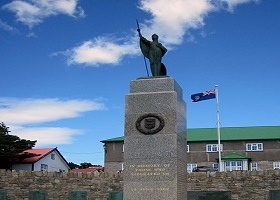
Day At Sea
Day Puerto Madryn, ArgentinaArrives 08:00 AM Departs 05:00 PM
"To a Spanish speaker, the name of Puerto Madryn, a city of some 94,000 in northern Patagonia in Argentina, may look odd. That second word doesn't appear to be Spanish, because it's not. Love Jones-Parry, a prominent Welsh landowner, traveled to Patagonia in 1862 to determine whether the area was appropriate for Welsh settlers. When his ship was blown off course, he named the bay where it landed Porth Madryn, after his estate in Wales. In 1865, a group of 162 Welsh immigrants (other sources put the figure at 150), encouraged by Jones-Parry's favorable reports, sailed to Argentina to establish the settlement known today as Puerto Madryn. Traces of the city's British roots remainâyou can find restaurants that still serve afternoon tea. But for most travelers today, Puerto Madryn is best known as the gateway to the PenÃnsula Valdés, a UNESCO World Heritage Site that's home to significant populations of seals, sea lions and whales just offshore. While the natural wonders and the region's fauna are the main draws, it's worth spending some time exploring the restaurant-lined promenades and beaches that have made the city an increasingly popular resort destination. "
"To a Spanish speaker, the name of Puerto Madryn, a city of some 94,000 in northern Patagonia in Argentina, may look odd. That second word doesn't appear to be Spanish, because it's not. Love Jones-Parry, a prominent Welsh landowner, traveled to Patagonia in 1862 to determine whether the area was appropriate for Welsh settlers. When his ship was blown off course, he named the bay where it landed Porth Madryn, after his estate in Wales. In 1865, a group of 162 Welsh immigrants (other sources put the figure at 150), encouraged by Jones-Parry's favorable reports, sailed to Argentina to establish the settlement known today as Puerto Madryn. Traces of the city's British roots remainâyou can find restaurants that still serve afternoon tea. But for most travelers today, Puerto Madryn is best known as the gateway to the PenÃnsula Valdés, a UNESCO World Heritage Site that's home to significant populations of seals, sea lions and whales just offshore. While the natural wonders and the region's fauna are the main draws, it's worth spending some time exploring the restaurant-lined promenades and beaches that have made the city an increasingly popular resort destination. "
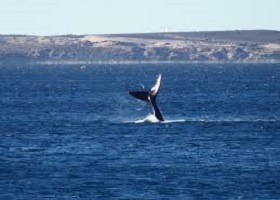
Day At Sea
Day Punta del Este, UruguayArrives 08:00 AM Departs 03:00 PM
For years, Punta del Este was one of those places that travel writers would describe as âsleepy.â With a population of laid-back permanent residents numbering just under 10,000, there wasn't a lot going on in this town in the remote southeastern corner of Uruguay. But then the news got out. Punta del Este began to be referred to as the Hamptons of South America, andâmore alluring stillâas the continent's own St.-Tropez. In other words, Punta del Este was a gorgeous coast and a safe and moneyed port city: perfect for a vacation. It's the preferred getaway for wealthy Uruguayans and Argentines and many have second homes here. The population swells with these part-time residents and sun-seeking vacationers during the winter, when quiet Punta del Este cedes to its alter ego of glitzy, glamorous resort town. In addition to soaking up sun on the beautiful beaches and swimming in turquoise waters, visitors enjoy shopping at upscale boutiques, exploring the local art scene, trying their luck at a casino and tasting fresh-from-the-sea specialties at Punta del Este's restaurants.
For years, Punta del Este was one of those places that travel writers would describe as âsleepy.â With a population of laid-back permanent residents numbering just under 10,000, there wasn't a lot going on in this town in the remote southeastern corner of Uruguay. But then the news got out. Punta del Este began to be referred to as the Hamptons of South America, andâmore alluring stillâas the continent's own St.-Tropez. In other words, Punta del Este was a gorgeous coast and a safe and moneyed port city: perfect for a vacation. It's the preferred getaway for wealthy Uruguayans and Argentines and many have second homes here. The population swells with these part-time residents and sun-seeking vacationers during the winter, when quiet Punta del Este cedes to its alter ego of glitzy, glamorous resort town. In addition to soaking up sun on the beautiful beaches and swimming in turquoise waters, visitors enjoy shopping at upscale boutiques, exploring the local art scene, trying their luck at a casino and tasting fresh-from-the-sea specialties at Punta del Este's restaurants.
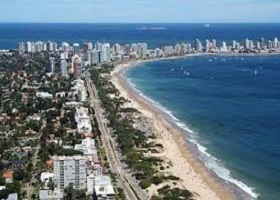
Day Montevideo, UruguayArrives 08:00 AM Departs 06:00 PM
"Uruguay's capital, Montevideo, often gets overshadowed by her larger, flashier sister across the RÃo de la Plata, Buenos Aires. While Montevideo may not have quite the bustle of Argentina's capital, it shares that city's cosmopolitan atmosphere and, of course, excellent steak houses. Its smaller size is also an advantage: There is a relaxed feel to this more low-key counterpart to BA. Montevideo has a surprising mix of neighborhoods. The Ciudad Vieja, with its grid of streets on a peninsula separating the RÃo de la Plata from the harbor, is the colonial heart. Long neglected, it has recently undergone a renaissanceârestaurants, bars and clubs are opening in historic buildings that have been meticulously restored. Montevideo's downtown is a treasure trove of Art Deco buildings, while the newer eastern suburbs may evoke Miami for visitors. Gleaming skyscrapers and open-air cafés overlook beaches that run for miles."
"Uruguay's capital, Montevideo, often gets overshadowed by her larger, flashier sister across the RÃo de la Plata, Buenos Aires. While Montevideo may not have quite the bustle of Argentina's capital, it shares that city's cosmopolitan atmosphere and, of course, excellent steak houses. Its smaller size is also an advantage: There is a relaxed feel to this more low-key counterpart to BA. Montevideo has a surprising mix of neighborhoods. The Ciudad Vieja, with its grid of streets on a peninsula separating the RÃo de la Plata from the harbor, is the colonial heart. Long neglected, it has recently undergone a renaissanceârestaurants, bars and clubs are opening in historic buildings that have been meticulously restored. Montevideo's downtown is a treasure trove of Art Deco buildings, while the newer eastern suburbs may evoke Miami for visitors. Gleaming skyscrapers and open-air cafés overlook beaches that run for miles."
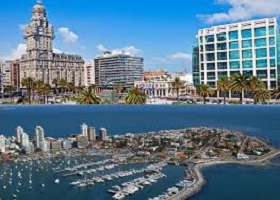
Day Buenos Aires, ArgentinaArrives 08:00 AM
"In the early 20th century, Buenos Aires, Argentina, gained immense wealth when it began shipping its pampas-raised beef around the world. It quickly entered the club of great world cities, and a slew of attractions and architectural jewels soon arose. Since that time, the capital has experienced huge swings in economic and political fortune. But Buenos Aires continues to fascinate and entertain sightseeing visitors, both for its chaotic energy and for its sheer urban beauty. Thankfully, the Belle Ãpoque grandeur and enormous tracts of greenery remain. Any list of things to do in Buenos Aires would begin with its many walkable neighborhoods; Palermo especially stands out, thanks to creative residents who have pushed the restaurant scene well beyond beef. Porteñosâas the locals are calledâmay be of Spanish, Italian, Jewish or Middle Eastern descent; that mix of cultures is reflected in the city's dialect, foods and pastimes. Looking beyond the city's sights, Buenos Aires is known as the birthplace of tango, and while the music and dance never quite went away, today tango is making a resurgence. Fans come here from around the world to take part in or watch the milongas (dance events). Argentines are world leaders in polo as well, and as the sport captures the interest of more and more travelers, hunky players like Nacho are gaining global celebrity. "
"In the early 20th century, Buenos Aires, Argentina, gained immense wealth when it began shipping its pampas-raised beef around the world. It quickly entered the club of great world cities, and a slew of attractions and architectural jewels soon arose. Since that time, the capital has experienced huge swings in economic and political fortune. But Buenos Aires continues to fascinate and entertain sightseeing visitors, both for its chaotic energy and for its sheer urban beauty. Thankfully, the Belle Ãpoque grandeur and enormous tracts of greenery remain. Any list of things to do in Buenos Aires would begin with its many walkable neighborhoods; Palermo especially stands out, thanks to creative residents who have pushed the restaurant scene well beyond beef. Porteñosâas the locals are calledâmay be of Spanish, Italian, Jewish or Middle Eastern descent; that mix of cultures is reflected in the city's dialect, foods and pastimes. Looking beyond the city's sights, Buenos Aires is known as the birthplace of tango, and while the music and dance never quite went away, today tango is making a resurgence. Fans come here from around the world to take part in or watch the milongas (dance events). Argentines are world leaders in polo as well, and as the sport captures the interest of more and more travelers, hunky players like Nacho are gaining global celebrity. "
